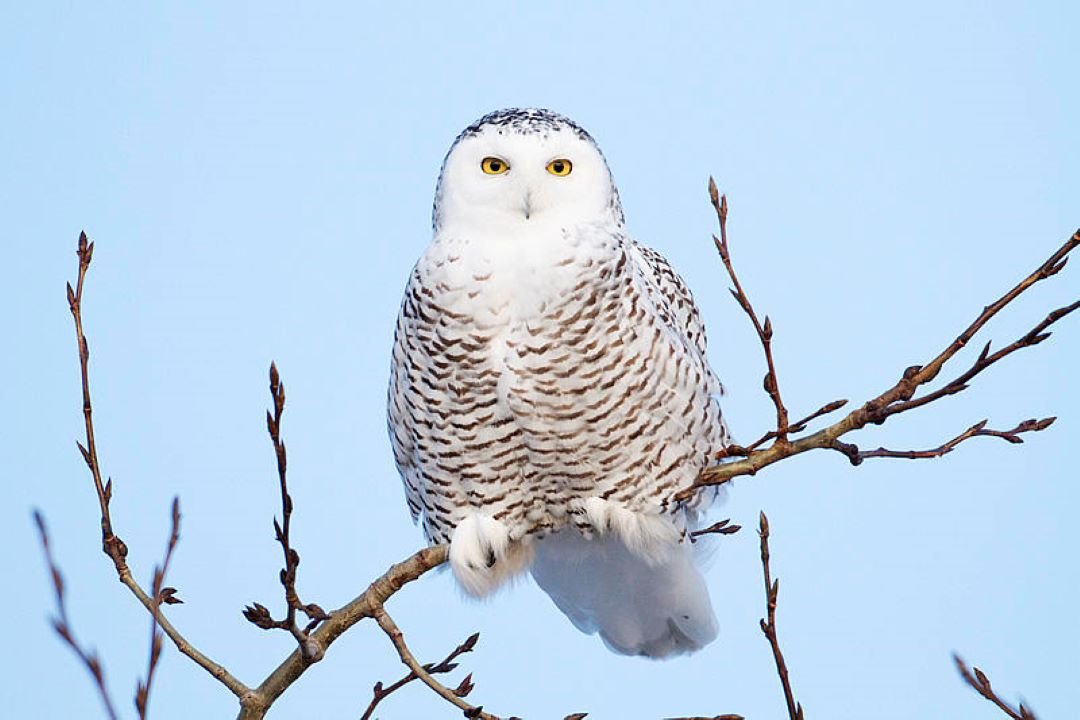Saw-whet owls northward migration tracked with MOTUS
Photo of BBO Chair Geoff Holroyd with a tagged Northern Saw-whet Owl
In 2023, the Beaverhill Bird Observatory (BBO) purchased 50 MOTUS, a global wildlife tracking system, nanotags. The results have been surprising with all the owls’ tags detected to the south and west of Alberta during October and November.
The autumn migration of Saw-whet Owls has been documented at the BBO for over 20 years. Band recoveries indicated that most owls flew east towards the Great Lakes and eastern North America with a few found to the south and west. However, most owl banders are to the east, with few to the south and west.
In autumn, the owls went to the northwestern US states, but after the end of November no detections were heard through winter. In March, MOTUS stations detected the start of their northward migration. The first detection was on March 8 on the coast south of Vancouver, BC. On April 2, an owl that had been detected in October at Sylvan Lake was detected in southern BC at Newgate Ambrose.
One of the big unknowns in BBO owls’ movements was when the spring migration occurred. Now there is the first indications of its timing, with more detections to come. Some Saw-whets overwinter in Alberta and are already on their nesting territories with the added advantage of a home before the migrants return.
Edmontonians encouraged to act on invasive weeds
Nicole Kimmel photo
Invasive species are the second biggest threat to biodiversity after habitat loss. The city relies on Edmontonians to spot, report, and remove invasive species. Hundreds of volunteers have joined together to stop the spread of invasive plants and protect Edmonton's biodiversity.
While 35 of the 75 plant species listed in the Alberta Weed Control Act have been found in Edmonton, the city is focusing on education and awareness of five weeds this summer: Japanese Knotweed, Himalayan Balsam, Creeping bellflower, Purple loosestrife and Garlic mustard.
Residents are asked to help control the spread of invasive weeds by spotting, reporting and removing them. Characteristics of invasive weeds include returns every year, spreads rapidly and thrives in tough conditions. Weed photos at https://www.edmonton.ca/programs_services/pests/weed-identification-advice
Why do birds and other animals migrate
Gerald Romanchuk photo
Birds migrate to find more resources, either food or nesting locations. Migration is the seasonal movement of animals from one area to another, but it does not just happen north-south, and it’s not just birds who migrate. Caribou, salmon, and butterflies also undertake migrations.
Most songbirds in Canada rely, at least in part, on insects to live. While insect larvae must survive the winter too, most insects are asleep or developing as eggs in the winter and are not very accessible to a lot of songbirds. This, combined with cold temperatures, mean that many bird species migrate south for the winter.
Why do birds even bother to fly back to Canada in the spring? The answer is once again with food, the many insects here in summer. There is lots of competition for food on the wintering grounds, so songbirds benefit from making the 1000+ km journey up north to raise their young when food is plentiful.
Several species migrate to the Edmonton area in winter instead of summer, including Great Gray and Northern Hawk Owls, as well as Snow Buntings and Redpolls. The Snowy Owl migrates here from their Arctic breeding grounds. https://www.ealt.ca/blog/cartoon-migration
Mountain Brother by Sergio Serrano & Alexander Stewart, Castle Downs Park
https://www.edmontonarts.ca/public-art/mountain-brother
Comment or Contributions
Please note articles may not reflect the position of NSRVCS. River Valley News is meant to be a clearinghouse for the variety of opinions and ideas about Edmonton’s River Valley.
Email river valley photos, event information, comments, or questions to nsrivervalley@gmail.com
Forward this link to anyone you think may want to sign up for this newsletter https://www.edmontonrivervalley.org/newsletter-signup
















